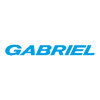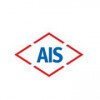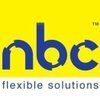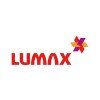Filter interviews by
Ppap Automotive Interview Questions and Answers for Experienced
15 Interview questions
In my previous role, I managed PPC campaigns, optimizing ad spend and improving ROI through data-driven strategies.
Managed a monthly budget of $10,000 for Google Ads, achieving a 25% increase in conversions.
Conducted A/B testing on ad copy, leading to a 15% improvement in click-through rates.
Utilized analytics tools like Google Analytics and SEMrush to track performance and adjust strategies.
Collaborated with the ...
Thermocouples and RTDs are temperature sensors with distinct operating principles and applications.
Thermocouples generate a voltage based on temperature difference, while RTDs measure resistance changes with temperature.
Thermocouples are suitable for high-temperature applications (up to 2000°C), e.g., in furnaces.
RTDs provide higher accuracy and stability, typically used in industrial processes, e.g., in HVAC syst...
QC tools are techniques used to monitor and improve quality in processes and products.
Check Sheets: Used for data collection and analysis, e.g., tracking defects in a manufacturing process.
Control Charts: Help monitor process stability over time, e.g., tracking the temperature in a production line.
Pareto Charts: Identify the most significant factors in a dataset, e.g., determining the most common types of defects.
...
A Henry low refers to a specific low-pressure condition in a system, often related to fluid dynamics or thermodynamics.
Henry's law states that the amount of gas dissolved in a liquid is proportional to the pressure of the gas above the liquid.
Example: Carbonated beverages have high pressure of CO2, leading to more gas dissolved in the liquid.
In environmental science, it helps in understanding how pollutants behave...
First angle and third angle are two different methods of representing orthographic projections in engineering drawings.
First angle projection is commonly used in Europe and Asia, where the object is placed in the first quadrant of the projection plane. The views are obtained by projecting the object onto the planes of projection.
Third angle projection is commonly used in North America, where the object is placed i...
There are three main types of lathe operations: facing, turning, and boring.
Facing: Removing material from the end of a workpiece to create a flat surface.
Turning: Removing material from the outer diameter of a workpiece to create a cylindrical shape.
Boring: Enlarging an existing hole in a workpiece.
The process of new tool making on CNC milling machine involves several steps.
Designing the tool using CAD software
Selecting the appropriate material for the tool
Creating a toolpath using CAM software
Setting up the CNC milling machine
Machining the tool using the CNC milling machine
Inspecting and testing the tool for accuracy and quality
To handle a new product in the after-market with no presence, a strategic approach is needed.
Conduct market research to understand customer needs and preferences
Develop a comprehensive marketing plan to create awareness and generate demand
Establish partnerships with distributors or retailers to reach the target market
Offer incentives or promotions to encourage customers to try the new product
Monitor customer feedb...
PDI stands for Pre-Delivery Inspection.
PDI is a process of inspecting a product before it is delivered to the customer.
It is commonly used in the automotive industry to ensure that vehicles are in good condition before they are sold.
During a PDI, technicians check various components of the product, such as brakes, tires, and electronics, to ensure that they are functioning properly.
PDI is important to ensure custo...
My favorite core subject is Structural Engineering, focusing on the design and analysis of buildings and bridges.
Structural Analysis: Understanding forces and moments in structures, e.g., using methods like Finite Element Analysis (FEA).
Material Properties: Knowledge of materials like steel and concrete, including their stress-strain behavior under loads.
Load Calculations: Ability to calculate dead loads, live loa...
Ppap Automotive Interview Experiences for Experienced
25 interviews found
Mechanical Design and Development Engineer Interview Questions & Answers
posted on 3 Mar 2025
(5 Questions)
- Q1. Type measurement instrument
- Q2. Type of machining process
- Ans.
Machining processes involve removing material from a workpiece to create the desired shape and size.
Common machining processes include turning, milling, drilling, and grinding
Turning involves rotating the workpiece while a cutting tool removes material
Milling uses a rotating cutter to remove material from the workpiece
Drilling creates holes in the workpiece using a rotating drill bit
Grinding uses an abrasive wheel to r...
- Q3. Different between first angle and third angle
- Ans.
First angle and third angle are two different methods of representing orthographic projections in engineering drawings.
First angle projection is commonly used in Europe and Asia, where the object is placed in the first quadrant of the projection plane. The views are obtained by projecting the object onto the planes of projection.
Third angle projection is commonly used in North America, where the object is placed in the...
- Q4. Types of cutting
- Ans.
Types of cutting include abrasive cutting, chipless cutting, and shear cutting.
Abrasive cutting involves using abrasive particles to cut materials.
Chipless cutting involves using tools to deform materials without creating chips.
Shear cutting involves using shear forces to cut materials.
Examples include laser cutting, waterjet cutting, and guillotine cutting.
- Q5. How many kinds of lath operation
- Ans.
There are three main types of lathe operations: facing, turning, and boring.
Facing: Removing material from the end of a workpiece to create a flat surface.
Turning: Removing material from the outer diameter of a workpiece to create a cylindrical shape.
Boring: Enlarging an existing hole in a workpiece.
I appeared for an interview in May 2025, where I was asked the following questions.
- Q1. Abour Previous job
- Ans.
In my previous role, I managed PPC campaigns, optimizing ad spend and improving ROI through data-driven strategies.
Managed a monthly budget of $10,000 for Google Ads, achieving a 25% increase in conversions.
Conducted A/B testing on ad copy, leading to a 15% improvement in click-through rates.
Utilized analytics tools like Google Analytics and SEMrush to track performance and adjust strategies.
Collaborated with the conte...
- Q2. Related to ppc
I appeared for an interview in Apr 2025, where I was asked the following questions.
- Q1. What is the relieving policy in your organization?
- Ans.
Relieving policy outlines the process and conditions under which an employee can leave the organization, ensuring smooth transitions.
Notice Period: Employees are typically required to give a notice period of 30 days before leaving, allowing time for knowledge transfer.
Exit Interviews: Conducting exit interviews helps gather feedback and understand reasons for leaving, which can improve retention strategies.
Final Settle...
- Q2. What is the salary policy?
- Ans.
A salary policy outlines how an organization determines employee compensation, ensuring fairness and competitiveness in the market.
Market Competitiveness: Salary policies are often based on market research to ensure that compensation is competitive with similar roles in the industry.
Performance-Based Pay: Many organizations incorporate performance metrics into their salary policies, rewarding high performers with bonus...
Quality Assurance Quality Control Engineer Interview Questions & Answers
posted on 3 Jun 2025
- Q1. What is Quality?
- Q2. What is Qc?
- Q3. What is QA?
(1 Question)
- Q1. Manufacturing tools and si Die
(2 Questions)
- Q1. Fifo & lifo concept
- Ans. First in first out , last in first out
- Q2. Perpetual inventory
- Ans. A continuous accounting practices that record inventory change in real time without the need for physical inventory so the book inventory accurately show the real stock
I applied via Naukri.com and was interviewed in May 2023. There were 3 interview rounds.

(1 Question)
- Q1. Relatable with Resume
(1 Question)
- Q1. CTC Discussion and Beneficiaries discussion and Basic Knowledge in TPS
I appeared for an interview before Nov 2022.

(1 Question)
- Q1. About your self , family background details, educational details, about experience, current and expected CTC etc.
(1 Question)
- Q1. Quality management system, handling abnormalities in quality, about process & product & defect knowledge, core tools, implementation of core tools, poka yoke with real life experience, supplier quality che...
(1 Question)
- Q1. Final round will done with plant head a brief introduction, daily work management, core tools , etc
I applied via Approached by Company and was interviewed in Oct 2022. There were 2 interview rounds.

(2 Questions)
- Q1. Firstly they ask my favorite subjects Ans. Automobile engineering and thermodynamics.
- Q2. They ask some questions from automobile like 2 stroke and 4 stroke engine.,Knoking and detonation, distribution etc. They only ask basic questions from automobile. From thermodynamics he ask about rankine...
Interview Preparation Tips
- Automobile
- MS Office Tools
Make atleast two favorite subjects in depth because most of the core company asked your favorite subject then they start asking questions from it.
I appeared for an interview before Nov 2023, where I was asked the following questions.
- Q1. NPD Core tools
- Q2. Countermeasures report CAPA
Top trending discussions






Ppap Automotive Interview FAQs
Some of the top questions asked at the Ppap Automotive interview for experienced candidates -
The duration of Ppap Automotive interview process can vary, but typically it takes about less than 2 weeks to complete.
Tell us how to improve this page.
Ppap Automotive Interviews By Designations
- Ppap Automotive Quality Engineer Interview Questions
- Ppap Automotive Graduate Engineer Trainee (Get) Interview Questions
- Ppap Automotive Engineer Interview Questions
- Ppap Automotive Diploma Trainee Engineer Interview Questions
- Ppap Automotive Production Engineer Interview Questions
- Ppap Automotive Management Trainee Interview Questions
- Ppap Automotive Graduate Engineer Interview Questions
- Ppap Automotive Team Leader (Technical) Interview Questions
- Show more
Interview Questions for Popular Designations
- Associate Interview Questions
- Software Engineer Interview Questions
- Senior Associate Interview Questions
- Business Analyst Interview Questions
- Sales Executive Interview Questions
- Senior Engineer Interview Questions
- Associate Software Engineer Interview Questions
- Senior Software Engineer Interview Questions
- Show more
Overall Interview Experience Rating
based on 10 interview experiences
Difficulty level
Duration
Interview Questions from Similar Companies
Ppap Automotive Reviews and Ratings
based on 422 reviews
Rating in categories
|
Engineer
108
salaries
| ₹2.4 L/yr - ₹5.8 L/yr |
|
Assistant Engineer
70
salaries
| ₹2 L/yr - ₹3.6 L/yr |
|
Production Engineer
68
salaries
| ₹2.2 L/yr - ₹5.2 L/yr |
|
Assistant Manager
62
salaries
| ₹5.9 L/yr - ₹10 L/yr |
|
Graduate Engineer Trainee (Get)
49
salaries
| ₹1.8 L/yr - ₹3.4 L/yr |

JBM Group

Subros
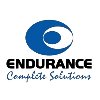
Endurance Technologies

Spark Minda
- Home >
- Interviews >
- Ppap Automotive Interview Questions >
- Ppap Automotive Interview Questions for Experienced



